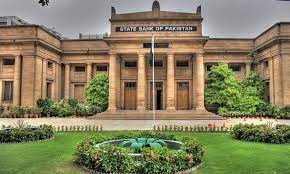PTBP Web Desk
The State Bank of Pakistan (SBP) has highlighted the country’s recent upgradation in sovereign credit rating as a positive development, forecasting that the timely realization of the new IMF program will significantly boost financial inflows.
This statement was part of the SBP’s Mid-Year Performance Review of the Banking Sector (The Review) for the first half of the calendar year 2024 (H1CY24).
The review indicates that the performance and resilience of the banking sector remained satisfactory during H1CY24. Despite global economic headwinds, Pakistan’s macroeconomic environment has shown signs of improvement, with revival in economic activity, receding inflationary pressures, and a narrowing current account deficit. These positive developments have prompted the SBP to cut the policy rate by 450 basis points so far this year.
However, the banking sector’s performance in the second half of CY24 (H2CY24) will largely depend on the operating environment and evolving policy stance. The SBP projects that improvements in macroeconomic conditions, coupled with a stable exchange rate, are likely to ease financial conditions going forward. This sets the stage for the banking sector to continue its steady performance trajectory.
The Review suggests that the expansion of the banking sector’s balance sheet is likely to be driven mainly by investments due to the government’s persistent borrowing needs. Advances are also expected to gain momentum in Q4CY24, driven by seasonal factors, the anticipated recovery in economic activity, and the easing of financial conditions.
Earnings within the banking sector are expected to remain steady due to an increase in the volume of earning assets. This is likely to support the sector’s solvency position. Continued economic recovery may enhance both the credit needs and the repayment capacity of borrowers, further improving the credit risk profiles of banks. However, the sector’s exposure to government borrowing is expected to remain high in H2CY24, necessitating measures to reduce reliance on the banking sector for fiscal needs.
The SBP emphasizes that the banking sector is expected to remain resilient to adverse but plausible shocks to key risk factors and macroeconomic conditions. This resilience is attributed to the sector’s capital cushions and buffers. The Review includes results from the latest macro stress tests, which indicate that the banking sector, including large systemically important banks, can withstand severe macroeconomic shocks over a projected period of two years.
In addition to evaluating the banking sector’s performance, the SBP’s Review covers the performance of financial markets and the results of the Systemic Risk Survey (SRS). This survey represents the views of independent experts on current and potential risks to financial stability.
According to the Review, the balance sheet of the banking sector expanded by 11.5 percent in H1CY24, primarily driven by investments in government securities, as the government’s demand for bank credit remained high. Advances posted contained growth due to net retirements by the private sector, although there was some revival in long-term financing to SMEs.
On the funding side, deposits increased by 11.7 percent in H1CY24, with significant contributions from saving and current deposits. This higher pace of asset growth necessitated additional funding, maintaining banks’ reliance on borrowing.
The asset quality of the sector remained satisfactory, with only a subdued increase in gross Non-Performing Loans (NPLs). Total provisioning coverage against NPLs improved to 105.3 percent by the end of June 2024, with the application of IFRS-9 prompting banks to provide general loan loss allowances for performing loans.
However, earnings slowed down due to a declaration in return on advances and a contraction in the net interest margin. Despite this, non-interest income, including fee income and trading gains on government securities, supported overall profitability. Performance indicators such as Return on Asset (ROA) and Return on Equity (ROE) saw a slight decline, settling at 1.2 percent and 20.4 percent, respectively, as of June 2024.
The solvency position of the banking sector remains strong, with the Capital Adequacy Ratio improving to 20.0 percent, well above the minimum regulatory requirement. The gradual improvement in macroeconomic conditions also contributed to relatively lower stress in domestic financial markets during H1CY24.
According to the results of the 14th wave of the SRS conducted in July 2024, the top three prevailing risks identified by independent survey participants are the “energy crisis,” “volatility in commodity prices,” and “foreign exchange risk.” Despite these risks, respondents expressed confidence in the stability of the financial system and the regulators’ oversight capabilities.




